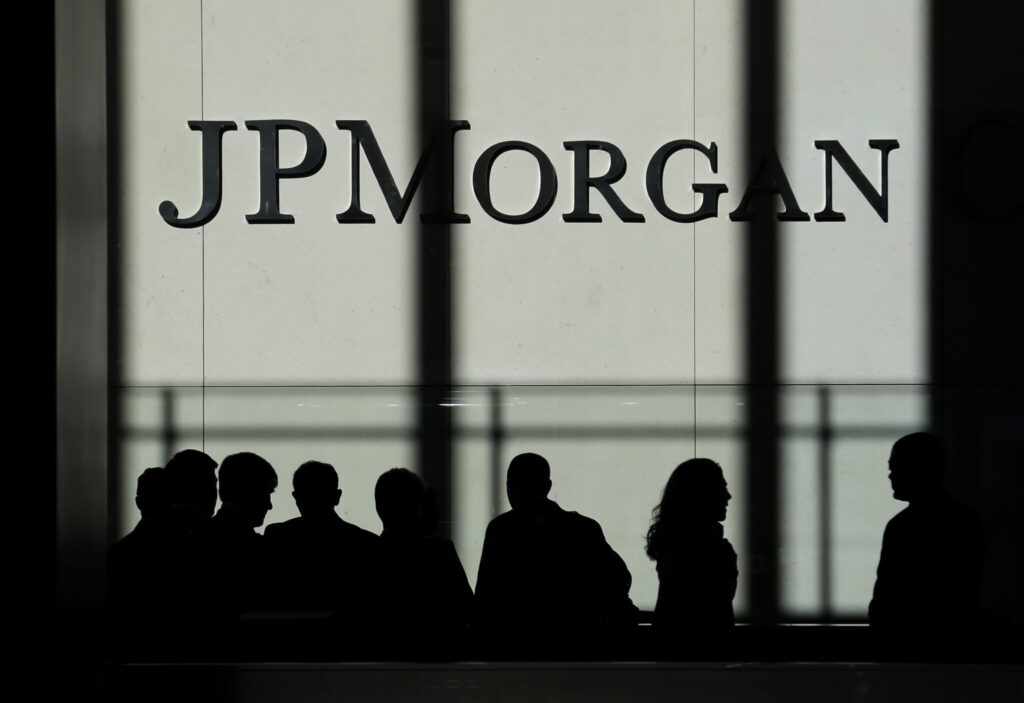U.S. banking giants are expected this week to report lower profits for the fourth quarter after they set money aside to cover souring loans while also paying more to depositors. The largest banks’ net interest income (NII) – or the difference between what they earn on loans and pay out on deposits – probably fell on average 10% in the fourth quarter, Goldman Sachs analysts said. An estimated 15% decline in trading revenue will also weigh on earnings, they said.
Quick Read
Key points regarding the expected earnings reports from U.S. banking giants:
- Lower Profits Expected: Major U.S. banks are anticipated to report reduced profits for the fourth quarter. This is partly due to setting aside funds for potential loan defaults and increased payouts to depositors.
- Net Interest Income Decline: Net interest income (NII) is projected to have decreased by an average of 10% in the fourth quarter, according to Goldman Sachs analysts. This decline results from the difference between earnings from loans and payouts on deposits.
- Trading Revenue Drop: An estimated 15% decline in trading revenue is also expected to impact the banks’ earnings.
- Major Banks Reporting Results: JPMorgan Chase, Bank of America, Citigroup, and Wells Fargo will report their fourth-quarter and full-year results on Friday.
- Increased Loan Default Reserves: Banks have allocated more reserves in the fourth quarter to prepare for potential customer loan defaults.
- Earnings Per Share (EPS) Predictions:
- Bank of America: Expected 23% drop in fourth-quarter EPS compared to the previous year.
- Citigroup and Morgan Stanley: Anticipated 25% and 17% decrease in EPS, respectively.
- JPMorgan and Goldman Sachs: Predicted 3% and 2% decline in EPS.
- Wells Fargo’s Expense Reduction: Wells Fargo’s earnings may benefit from reduced expenses, including some related to regulatory orders.
- Citigroup and Morgan Stanley Updates: Citigroup’s sweeping overhaul and Morgan Stanley’s new CEO Ted Pick’s strategy update are of particular interest to investors.
- Macroeconomic Uncertainty: Analysts highlight the difficulty in predicting net interest income due to uncertainties, including the Federal Reserve’s interest rate cuts.
- U.S. Consumer Health: The financial stability of lower-income customers and increasing delinquencies are concerns, although loan defaults have been mitigated by the strong job market.
- 2023 Bank Profit Outlook: Despite the expected fourth-quarter slump, the largest banks’ earnings likely rose by 5% last year, outperforming regional banks.
- Expectations for 2024 and 2025: 2024 is seen as a transition year, with expectations of higher loan growth resuming in 2025.
- NII Trend and Lending Standards: The decline in NII might continue into the first half of this year as banks tighten lending standards amid stretched finances of lower-income consumers.
- Capital Conservation and Share Buybacks: Banks are likely to be cautious about share buybacks and conserve capital in anticipation of potentially stricter regulations.
- Impact of Interest Rate Changes on Securities Portfolios: As interest rates potentially decrease, banks’ securities portfolios are expected to regain value, thus supporting capital.
- Upcoming Presidential Election and Regulation: The 2024 U.S. presidential election could influence regulatory directions.
This summary outlines the expectations and factors influencing the upcoming earnings reports of major U.S. banks, highlighting broader economic and regulatory contexts.
Reuters has the story:
US banks’ profits to shrink as they brace for souring loans
Newslooks- NEW YORK, Jan 9 (Reuters) –
U.S. banking giants are expected this week to report lower profits for the fourth quarter after they set money aside to cover souring loans while also paying more to depositors.
The largest banks’ net interest income (NII) – or the difference between what they earn on loans and pay out on deposits – probably fell on average 10% in the fourth quarter, Goldman Sachs analysts said. An estimated 15% decline in trading revenue will also weigh on earnings, they said.
JPMorgan Chase (JPM.N), Bank of America (BAC.N), Citigroup (C.N) and Wells Fargo (WFC.N) report fourth-quarter and full year results on Friday.
Banks’ profits will likely be squeezed as they set aside more reserves in the fourth quarter to prepare for customers to default on the loans. Profits could also be curbed by banks paying more to keep depositors’ money in their accounts.
Bank of America’s earnings per share (EPS) are expected to drop 23% in the fourth quarter versus a year earlier, while EPS at Citigroup and Morgan Stanley will fall 25% and 17%, respectively, according to analyst estimates compiled by LSEG. EPS is predicted to slide 3% for JPMorgan and 2% for Goldman Sachs.
By contrast, earnings at Wells Fargo will benefit from a reduction in expenses, including some related to regulatory orders.
Separately, Citigroup investors will look for signs that its sweeping overhaul will raise returns. And Morgan Stanley’s new CEO Ted Pick will provide a strategy update, his first since taking the helm at the start of the year.
“There is a lot of macroeconomic uncertainty now and it’s hard to predict the trajectory for net interest income,” said Bank of America analyst Ebrahim Poonawala. He cited the debate about the potential pace of Federal Reserve interest rate cuts this year as one of the key questions hanging over markets.
The health of the U.S. consumer is also in focus as lower-income customers fall behind on payments in greater numbers. Although delinquencies are increasing, the strong job market has kept a lid on loan defaults, Poonawala added.
Last year was a strong year for bank profits despite the expected slump in fourth quarter net income. Earnings at the largest banks probably rose 5%, compared with a 5% decline for regional banks, Poonawala estimated.
“I think 2024 will be a transition year, and will set the stage for the resumption of higher loan growth in 2025,” said Jason Goldberg, an analyst at Barclays.
Looking ahead, the slide in NII in the fourth quarter could extend into the first half of this year as banks tighten their lending standards while lower income consumers’ finances become increasingly stretched, Goldman banking analyst Richard Ramsden said.
“We could have the opposite effect on the second half as interest rates go down,” he added.
Banks are expected to conserve capital this year and stay cautious on buying back their own shares as they brace for potentially stricter rules known as the Basel endgame that are open for public comment, analysts said. The upcoming U.S. presidential election could also change the direction of regulation.
Banks had been accumulating paper losses in their portfolios because they held securities that lost value when interest rates rose. As the Fed moves closer to reducing rates, the securities portfolios will regain value, helping to bolster banks’ capital, Goldman’s Ramsden said.

EARNINGS PER SHARE IN 4Q
| BANK | EPS 4Q 2023* | EPS 4Q 2022 |
| JPMorgan | 3.46 | 3.57 |
| Bank of America | 0.65 | 0.85 |
| Citigroup | 0.87 | 1.16 |
| Wells Fargo | 1.21 | 0.67 |
| Goldman Sachs | 3.25 | 3.32 |
| Morgan Stanley | 1.04 | 1.26 |
* LSEG mean estimates







